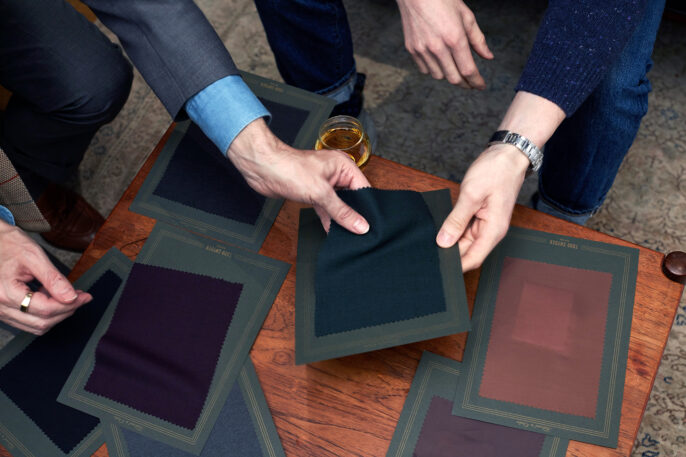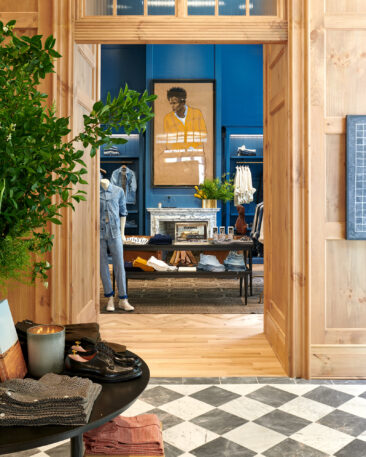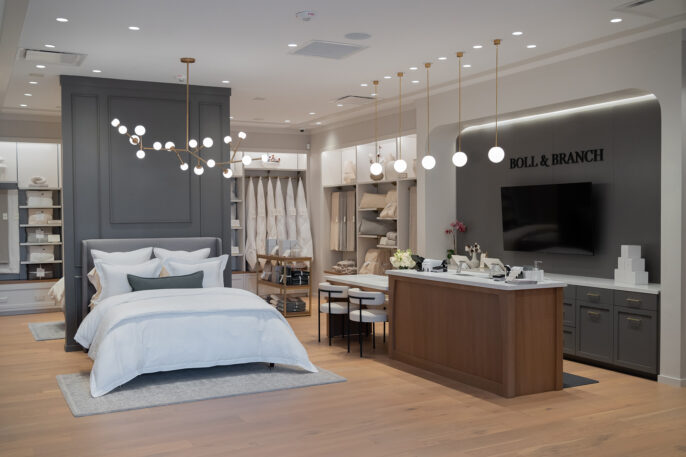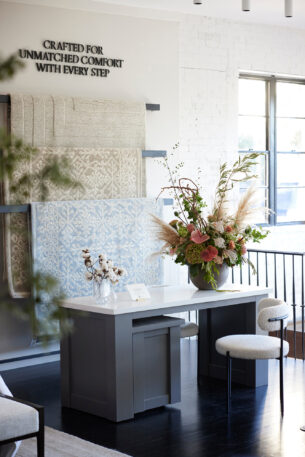When you visit a Boll & Branch store to pick a new set of sheets, the staff will ask if you would like them to come to your house to make your bed for you. And they’re perfectly serious.
For some customers, it’s not an appealing request, but for others, it’s a dream come true: Around two dozen people a month take up the offer at each of the brand’s seven stores. “One customer was just moving into a new house,” says Scott Tannen, Boll & Branch’s founder and CEO. “Her house was in total chaos, so the idea of coming home to a beautifully made bed really appealed to her. We were happy to accommodate.”
A decade ago, thousands of stores a year were shuttering in the “retail apocalypse” as customers increasingly shopped online. In those years, brands felt like they had to come up with entertaining retail experiences to woo customers into their brick-and-mortar locations. But in the post-pandemic years, consumers were eager to return to physical stores, and more than 16,000 stores opened in the previous two years. Last year, retail sales hit $6.183 trillion, up 11% from the year before.

As retail comes back, brands appear to be moving beyond entertainment and are focused, instead, on offering highly personal customer service, designed to make an impression. At a Todd Snyder store, you can have your clothes altered by an in-house tailor while you drink a glass of Scotch. At outdoor retailer Orvis, you can take a free fly-fishing class in local waters, so you can learn how to use your new fishing gear. At Converse’s holiday pop-up, you can have your sneakers embroidered with your initials. And Ikea is launching smaller stores, which have fewer products on display, but will have designers on hand to help you design your dream home.
In many ways, these high-touch customer service experiences return to the traditional, old-fashioned ways that shopkeepers have built relationships with their clients. But in a world where consumers increasingly interact with brands online, these personalized interactions with a brand feel novel and special.

The Post-Pandemic Store
Visiting Todd Snyder’s new store in Boston feels like stepping into a cozy, sophisticated home. The store features a pool table along with a fully stocked bar. Shelves are stacked with layers of sweaters, interspersed with coffee-table books and cologne, the way they might be at someone’s home. For each of his 15 retail stores, Snyder sources the pieces of furniture himself, often from vintage sellers. “It’s not meant to be dramatic,” he says. “It’s meant to make a guy feel welcome, and like they want to stay a while.”
Snyder began as a digitally native brand a decade ago. But as he’s starting to expand his fleet of brick-and-mortar stores, he’s taken a different approach from many other startups, which opted for more dramatic store concepts. In the years leading up to the pandemic, many direct-to-consumer brands enticed customers into stores with immersive experiences. Casper created nap pods you could rent to get a little shut-eye during the day. Vans created a skate park in its London store. And every brand from Glossier to Perrier created spectacular pop-ups designed to be excellent Instagram backdrops.
In the post-pandemic world, many brands have scaled back on these immersive stores. (Both Casper’s and Vans’ in-store experiences have now permanently closed.) Part of it has to do with the fact that many direct-to-consumer brands have struggled with profitability, and it was hard to quantify how these experiences would translate into sales. But part of it could have been that the novelty of these experiences was wearing off.
Now, as brands are investing in new stores, they are coming up with other ways to get customers in the store and keep them engaged. And many are focused on offering experiences that are directly relevant to the customers’ shopping visit. Snyder, for instance, wants to offer more than his own products in store, so customers have more to explore. He curates dozens of products from other brands he loves, from Red Wing Shoes to Moscot eyewear to Scosha bracelets. “There’s always an element of discovery when you enter our stores,” he says.
But he wants the stores to stand out for their level of personalized service. At the back of the Boston store, there’s a tailor on hand to make on-the-spot alterations to garments while you browse the store. And this year, Snyder launched made-to-measure suiting services. A tailor will measure the customer’s body to create a bespoke pattern for the suit. The customer can work with the tailor to pick the fabric and colors for the suit. The idea is to offer the kind of high-end service you might get in London’s Savile Row, but at a much more approachable price point: A bespoke Todd Snyder suit starts at around $1,000.

Old School, but New Tech
In many ways, the Todd Snyder store is a throwback to shops from the past, in which merchants had personal relationships with their clients. Some of the biggest brands are finding ways to create more intimate moments with their customers. Converse has invested in its customization program. In its SoHo and Boston stores, customers can create an entire sneaker from scratch, picking everything from the silhouette to the fabric to the laces, which can be transformed into a shoe while you wait. At a holiday pop-up in the Boston Seaport District, Converse has brought in an embroidery artist who can create custom patterns or monograms on sneakers.
Ikea has announced it is opening eight small-format stores that will be as compact as 1,100 square feet, just a fraction of its big-box stores, which can be as big as 500,000 square feet. The new stores are marketed as an opportunity for customers to meet with Ikea team members to discuss products and receive guidance as they design rooms.

As Boll & Branch expands its brick-and-mortar footprint, Scott Tannen, founder and CEO, says that the most important decisions have to do with the people they hire. The brand is deploying its in-store staff in all kinds of unconventional ways. They will visit customers’ homes to set up their beds for them. When a customer orders a piece of furniture, like a bed frame or a dresser, they will ride in the delivery van, armed with treats, to surprise the customer. “The customer’s experience comes down to a few interactions with members of our team,” he says. “We work very hard to make these delightful experiences.”
Bernd Schmitt, a professor of marketing at Columbia Business School, says that while these personal interactions are a throwback to the past, it’s now easier for brands to create these experiences with the help of technology. Brands can keep track of a customer’s buying history so they can better understand what they are looking for. They can also use texting and email to stay connected with customers after they have left the store. “There are more touch points to build this relationship with the customer,” he says. “And brands can do it more easily, with fewer people, thanks to technology.”
Tannen says these personal touches are a major investment. It takes time and effort to hire the right associates, and the company pays higher than market rates to get the best people for the job. But ultimately, he believes that these connections are valuable not just for driving immediate sales, but for nurturing long-term relationships. Boll & Branch has found that customers who shop in store tend to spend more with the brand and keep coming back in the future. “It’s something we’ve known all along in business, but somehow we’ve forgotten in the digital age,” Tannen says. “Great service is what creates loyal customers.”
